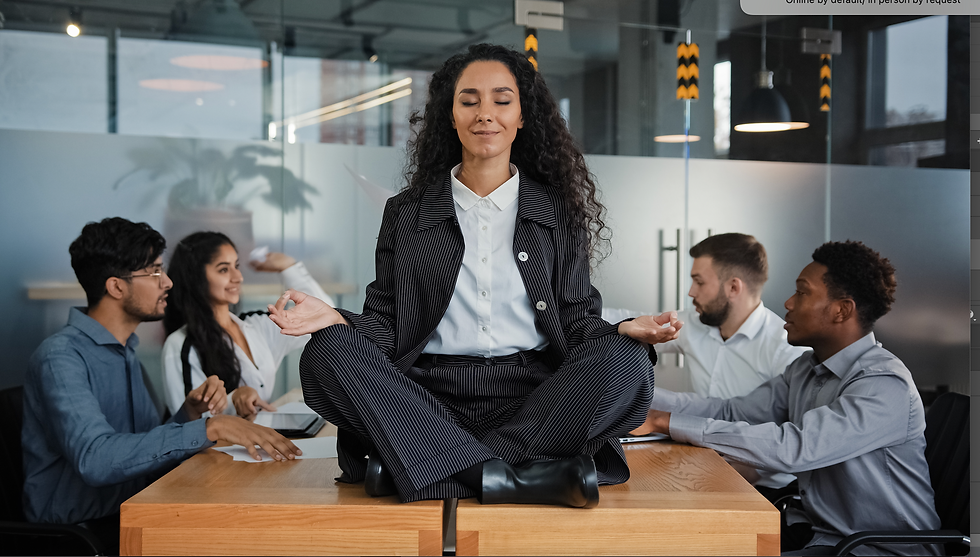Teenagers & young Adults:
- Celine Foelmli

- Dec 2, 2023
- 4 min read
Embracing Uniqueness & Navigating Different Learning Types for Personal and Academic Growth

Habits that may jeopardise academic success for teenagers include excessive screen time, poor time management, procrastination, engaging in gossip on social media or friends' chats, speaking in class or allowing distractions like unrelated thoughts during lessons. Additionally, alcohol consumption as well insufficient sleep can affect performance.
On the flip side, good habits that contribute to good grades involves prioritising adequate sleep, healthy diet, regular exercise, effectively managing phone usage, and maintaining a healthy balance between leisure and academic responsibilities.
To further promote good grades, maintaining a balanced study routine, setting realistic goals, and staying actively engaged in class discussions can also be beneficial. These positive practices lay a foundation for academic achievement.
Knowing about yourself is key, what is your type?
We are all different, and we function in different ways. What works for someone might not work for you. Perhaps you have not found what works best for you yet! It might be useful to conduct some research about different learning strategies.
Understanding learning styles, often categorised as auditory, visual, and kinaesthetic, is associated with the VAK model. Here's a brief overview of each:
Auditory Learners:
Characteristics: Auditory learners prefer to process information through listening. They grasp concepts well through spoken words, discussions, and lectures.
Preferred Learning Methods: They benefit from listening to explanations, engaging in group discussions, and using mnemonic devices.
Visual Learners:
Characteristics: Visual learners learn best through visual aids such as charts, graphs, diagrams, and images. They tend to have a strong spatial understanding.
Preferred Learning Methods: Reading, using visual aids, watching videos, and creating mind maps are effective methods for visual learners.
Kinaesthetic Learners:
Characteristics: Kinaesthetic learners learn through physical experiences and hands-on activities. They prefer learning by doing and actively engaging with the material.
Preferred Learning Methods: Role-playing, hands-on experiments, and interactive activities are beneficial for kinaesthetic learners.
It's essential to note that individuals often have a mix of these learning styles, with one style being more dominant. Additionally, some models include other styles, such as read/write learners. Tailoring teaching methods to accommodate various learning styles can enhance the effectiveness of educational experiences.
Are you kinaesthetic?
In a world where educational approaches often favour auditory and visual learning styles, kinaesthetic learners, who thrive through hands-on experiences and physical engagement, can sometimes feel overlooked.
The prevalence of multimedia and technology in education might pose a challenge for those who learn best through movement and touch.
Tips for Kinaesthetic Learners:
Incorporate Movement: Break up study sessions with short, active breaks. Pace while studying, use a stress ball, or engage in activities that involve physical movement to enhance focus.
Hands-On Activities: Seek out learning materials that involve manipulation and tactile experiences. Experiment with educational tools that allow you to touch and interact with the content. Simple cursive handwriting exercises can be surprisingly effective for enhancing memorisation. The physical act of writing in cursive engages both the motor skills and the brain, creating a multi-sensory experience that supports memory retention.
Role-Playing: Bring concepts to life through role-playing scenarios. Act out historical events, scientific processes, or literary scenes to make the information more tangible.
Use Manipulative: Utilise physical objects or manipulative to understand abstract concepts. For example, use building blocks for math problems or models for scientific principles.
Study in Practical Settings: Whenever possible, study in environments that simulate real-life situations. This could include labs, workshops, or even outdoor spaces.
Teach Others: Share your knowledge by teaching someone else. This not only reinforces your understanding but also allows you to incorporate movement and interaction.
Combine Learning Styles: Integrate kinaesthetic activities with auditory and visual elements. Create mind maps, record explanations, or watch videos that align with your hands-on learning.
Remember, embracing your kinaesthetic learning style is about finding what works best for you. Experiment with these tips and tailor your approach to make the learning experience more dynamic and engaging.
Pitfalls to Avoid for Kinaesthetic Learners:
Over-reliance on Technology:
Challenge: Kinaesthetic learners might find themselves at a disadvantage if they overly depend on computers and keyboards for note-taking and studying.
Solution: Balance digital tools with hands-on methods. Incorporate handwritten notes, sketches, and physical activities to complement computer-based learning.
Lack of Physical Movement:
Challenge: Extended periods of sedentary learning can be detrimental for kinaesthetic learners, leading to restlessness and reduced focus.
Solution: Integrate movement breaks into study sessions. Stand up, stretch, or engage in short physical activities to enhance concentration and overall well-being.
Limited Hands-On Activities:
Challenge: Traditional learning materials may not provide enough hands-on experiences for kinaesthetic learners.
Solution: Actively seek out opportunities for tactile engagement. Use manipulative, conduct experiments, and participate in practical activities to reinforce understanding.
Static Study Environments:
Challenge: Kinaesthetic learners may struggle in static or confined study spaces that lack physical interaction.
Solution: Opt for dynamic study environments. Experiment with various settings, such as outdoor spaces, where movement and interaction can be naturally incorporated.
Excessive Reading without Action:
Challenge: Passive reading without physical engagement may lead to reduced comprehension and retention for kinaesthetic learners.
Solution: Turn reading into an active process. Take notes by hand, visualise concepts, and actively relate information to real-world scenarios. If at home or in an environment that allows it, walk around in the room while reading.
By recognising and addressing these pitfalls, kinaesthetic learners can optimise their study strategies, making the learning experience more engaging, effective, and tailored to their unique style. I love the metaphor of being a human being, arriving at birth with a toolbox. By familiarising ourselves with the contents of our toolbox and acquiring the skills that accompany it, we gradually evolve into a better version of ourselves. Acknowledging and understanding our uniqueness allows us to develop our skills in a distinctly personal way, eliminating the need for comparisons with others, as it no longer holds relevance.
Warm regards, Celine




Comentarios